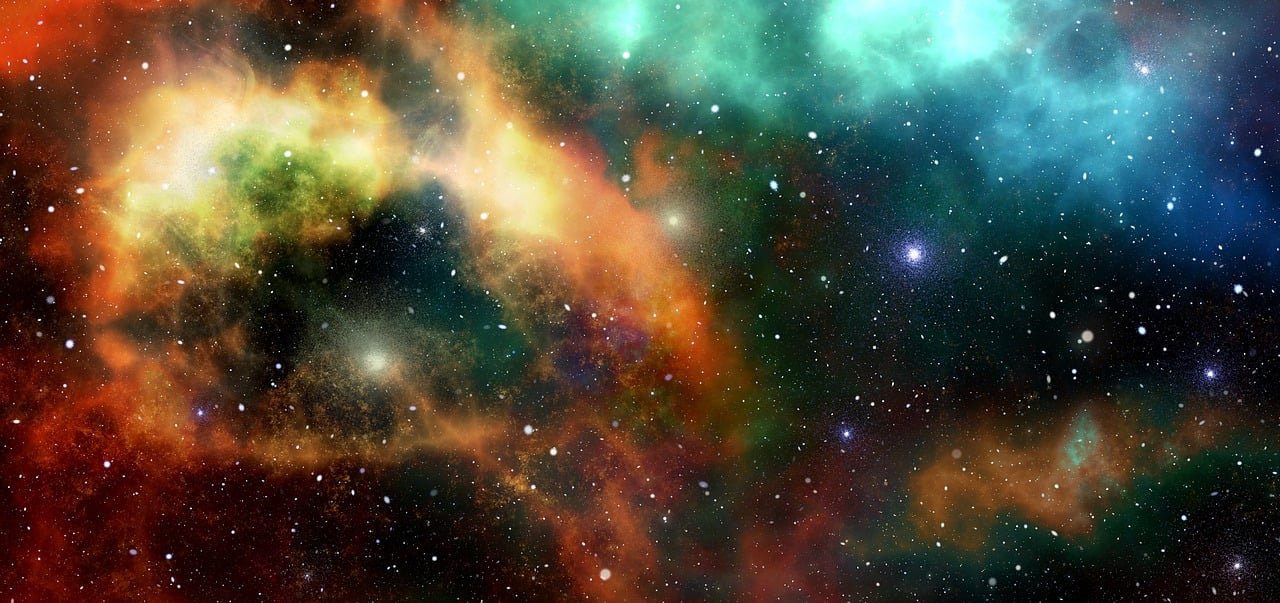Gazing up at the night sky, a tapestry of twinkling stars ignites a sense of wonder. From the fiery heart of our solar system to the swirling galaxies teeming with billions of suns, space is a realm brimming with captivating mysteries. Let’s embark on a fascinating journey, exploring the celestial wonders that reside within and beyond our cosmic neighborhood.
Suns: The Powerhouse Stars at the Center of Solar Systems
Our own Sun, a colossal ball of hot plasma, reigns supreme at the center of our solar system. Imagine a giant furnace, churning with nuclear fusion – the process where hydrogen atoms are squeezed together, releasing tremendous energy in the form of light and heat. This energy sustains life on Earth and orchestrates the delicate dance of planets within our solar system. The Sun’s immense gravity acts as an invisible conductor, keeping planets and other celestial bodies in their precise orbits. But our Sun is just one star among countless others, each with unique characteristics and lifespans.
Stars: The Luminous Beacons Illuminating the Cosmos
Stars are the fundamental building blocks of galaxies, majestic islands of light scattered across the vast cosmic ocean. These celestial powerhouses are giant spheres of hot gas, primarily composed of hydrogen and helium. Just like our Sun, they generate light and heat through the awe-inspiring process of nuclear fusion. However, stars come in a dazzling array of sizes, temperatures, and colors, each stage of their lifecycle marked by distinct properties. Some stars, like our Sun, are considered “yellow dwarfs,” stable and long-lived, steadily radiating light for billions of years. Others burn incredibly hot and bright, classified as “blue giants,” but have shorter lifespans ending in spectacular supernova explosions. These cosmic fireworks not only create new elements that enrich the universe but also potentially trigger the formation of new star systems.
Asteroids: Rocky Remnants with a Storied Past
While stars dominate the celestial landscape, our solar system is also home to a collection of rocky or metallic leftovers from its formation billions of years ago – asteroids. These celestial nomads primarily reside in the asteroid belt, a vast ring between Mars and Jupiter. Imagine a cosmic racetrack, filled with millions of rocky objects, ranging from pebbles to colossal bodies. The largest known asteroid, the dwarf planet Ceres, boasts a diameter of nearly 1,000 kilometers (620 miles). While most asteroids pose little threat, some have the potential to collide with Earth. Thankfully, space agencies are actively tracking near-Earth objects (NEOs) and developing strategies to deflect or even destroy any asteroid on a collision course with our planet.
Black Holes: Celestial Vacuum Cleaners with Immense Gravity
Black holes are the cosmic equivalent of a one-way street – not even light can escape their clutches. These enigmatic entities are formed when massive stars collapse under their own immense gravity, causing their cores to condense into incredibly dense points known as singularities. Imagine squeezing a star’s mass down to the size of a city – that’s the mind-boggling density of a black hole! Anything venturing too close to a black hole’s event horizon, the point of no return, is forever lost to the abyss. These celestial vacuum cleaners remain shrouded in mystery, but their existence continues to challenge our understanding of physics and inspire scientific quests to unravel their secrets.
Galaxies: Island Universes Teeming with Stars
Our cosmic neighborhood extends far beyond our solar system. Galaxies, vast collections of stars, gas, dust, and dark matter, are the true giants of the universe. Our home, the Milky Way galaxy, is a majestic barred spiral galaxy, estimated to contain hundreds of billions of stars, each a potential sun with its own planetary system. Imagine a swirling disc of stars, dotted with colorful nebulae (birthplaces of new stars) and long, dusty arms, all bound together by the invisible threads of gravity. Galaxies come in various shapes and sizes, from majestic spirals like the Milky Way to majestic elliptical galaxies and irregular galaxies with chaotic structures. These island universes are not static; they can interact with each other, merging or tidally disrupting one another over time, creating new galactic forms. The vastness of galaxies and the sheer number of stars within them paint a humbling picture of our place in the universe, a tiny speck in a grand cosmic tapestry.
Aliens: Are We Truly Alone in the Cosmos?
The possibility of extraterrestrial life has captivated humanity for centuries. The vastness of the universe, coupled with the discovery of thousands of exoplanets (planets outside our solar system), some potentially located in habitable zones where liquid water could exist, has fueled the search for life beyond Earth. Scientists are actively looking for biosignatures, potential signs of life, on these distant worlds. These biosignatures could include the presence of water, methane, or oxygen in a planet’s atmosphere, all molecules essential for life as we know it. While we haven’t found definitive proof of extraterrestrial life yet, the sheer number of potential habitats within our galaxy alone makes the possibility highly intriguing. The search for life beyond Earth continues to be a driving force in space exploration, pushing the boundaries of scientific discovery and igniting our imagination with the possibility of encountering intelligent life forms somewhere in the vast cosmos.
Human-Sent Robots: Our Emissaries Venturing into the Unknown
With current technology, interstellar travel remains firmly in the realm of science fiction. However, humanity isn’t content with simply gazing at the stars. We have sent robotic emissaries, our tireless scouts, to explore the wonders of our solar system. These robotic probes have ventured to all the planets, some even landing on their surfaces and transmitting back invaluable data and breathtaking images. Imagine rolling rovers like Curiosity diligently traversing the Martian landscape, analyzing rocks and searching for signs of past or present life. Landers like Huygens have braved the thick atmosphere of Titan, Saturn’s moon, revealing a world of lakes and rivers sculpted from liquid methane. These robotic missions have revolutionized our understanding of our celestial neighbors, providing ground-level (or rather, ground-rover) perspectives of these distant worlds.
The Future of Space Exploration: Pushing the Boundaries of Discovery
Our journey through the cosmos has just begun. As technology advances, future robotic missions could venture further into the solar system, exploring the icy moons of Jupiter and Saturn and even the dwarf planet Pluto. Space telescopes like the James Webb Space Telescope promise to unveil the secrets of distant galaxies and potentially provide even more compelling evidence of exoplanets suitable for life. The ultimate dream of human exploration of Mars is no longer a distant fantasy. Space agencies around the world are actively developing technologies and missions to send humans to the Red Planet in the coming decades.
Space exploration is not just about scientific discovery; it’s about pushing the boundaries of human achievement. It’s a testament to our insatiable curiosity and our desire to understand our place in the grand cosmic scheme. As we delve deeper into the universe, we not only unlock the secrets of celestial bodies but also gain a deeper appreciation for our own fragile blue planet. The cosmos continues to inspire awe and wonder, reminding us that we are just a small part of a vast and magnificent universe waiting to be explored. So, the next time you gaze up at the night sky, remember, it’s not just a canvas of twinkling lights – it’s a gateway to a universe brimming with possibilities, waiting for the next chapter in humanity’s exploration of the cosmos.



